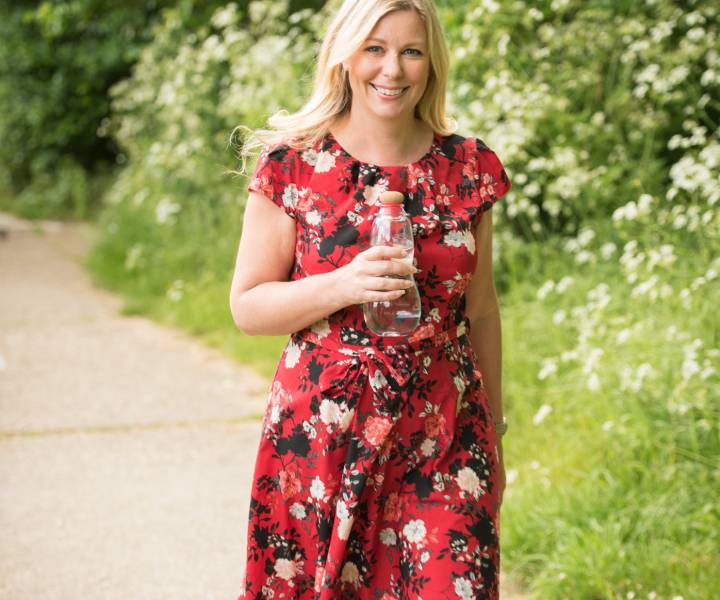Health
Do ‘health rules’ actually work?
by Helen Foster

Generally, I’m pretty healthy. I exercise three times a week, I don’t smoke, I eat my five a day and I try not to drink too much. Recently though, I’ve felt sluggish, my skin looks its age and there is a worrying spare tyre my normal exercise just will not shift.
Experts say that walking more, sitting less and drinking plenty of water are three easy changes that will show big improvements. And for six weeks I resolve to try all three, confident they can fit into my lifestyle. To keep it simple, I decide to introduce a new one every two weeks and record the results.
I visited the Omniya Clinic in London’s Knightsbridge; I was weighed and my blood cholesterol levels were measured. ‘You’re in good shape,’ the doctor said. ‘Your cholesterol is 4.3, which is healthy, but I’d like to see that number come down even lower.’ Next stop, my local branch of The Gym in Essex. Here I met Craig Page, specialist in body fat distribution. My fat level was a shocking 31%, mostly around my tummy and back.
Rule 1 - Walk 10,000 steps.
Weeks 1 & 2
I soon discovered 10,000 steps meant adding 70-90 minutes of walking to my day. When I was working away from home this was simple – I would walk to the station instead of getting the bus, walk up all the escalators and my Fitbit would be buzzing to tell me I’d reached my target by the time I got my train home.
Most days, however, I’m home-based, where racking up the steps requires more creativity. So, short walks round the block three times a day. When boredom hit on day five, I got on the phone to Greg Whyte OBE, ambassador to Fitbit and the man who trained David Walliams and Davina McCall to complete their Sport Relief challenges.
‘Try to change something about every walk,’ was his key piece of advice. ‘You might walk down a different road, try a faster pace or go for a really long walk first thing one day, then five short walks the next – variety is the key.’
He was right – I realised every walk was different – and I’d come back from them feeling positive. There was a downside – I ached.
This surprised me, I can easily run five miles and didn’t see why I couldn’t walk the same amount. Greg explained, ‘You use your muscles differently when walking than when running, and you probably shouldn’t have jumped into 10,000 steps every day from the outset. Starting at 2,000 then building up gradually is a far more sensible idea.’
Rule 2 - Stand up more
Weeks 3 & 4
In health terms, sitting is the new smoking. People who sit for long periods have a higher risk of diabetes, heart disease, some cancers and of, basically, dying younger than those who stand regularly.
I sit for about 10 hours a day – surely, I’m doomed? The latest official health advice is to stand up regularly throughout your day – and ideally rack up two to four hours on your feet daily. My mission was to add two hours of standing on top of my walking.
I found it impossible to write articles standing – my brain just wouldn’t focus. ‘To be honest, tasks that require a lot of thinking take a lot of practice to do standing,’ says Dr Stacy Clemes from Loughborough University. ‘It’s best to start with some easier tasks like making phone calls or checking and replying to emails.’
My biggest challenge though is standing outside work hours – I hate it. My chance to practise comes when I go to meet friends in a bar – they are standing, so I join them. It’s oddly sociable and we end up talking to people around us.
As with the 10,000 steps, my body is not as keen to adapt as my mind and by the end of the week my lower back is killing me. ‘If you have an underlying back problem, standing for more than 20 minutes is likely to bring it on,’ says Tim Allardyce from Croydon Physio. ‘If your back is weak I’d say to start off for 10 minutes every two hours to build things up. As you stand you’ll develop stabilising muscles in the spine that will help balance you. It will also help to improve core strength.’

Rule 3 - Drink two litres of water a day
Weeks 5 & 6
The final step. Dr Emma Derbyshire, adviser to the Natural Hydration Council says the idea we need two litres of plain water a day is a bit of a myth. The average woman needs about 1.6 litres of fluid a day and that can be made up of any liquid (yes, tea and coffee count), and also from water-filled foods like fruit and vegetables.
I would fill up a two-litre jug at the beginning of the day, and it had to be empty by bedtime. To drink safely, I had to spread my intake throughout the day, drinking small glasses frequently. It failed miserably – at the end of the first day I’d only had 500ml.
“It will help to have a large glass as soon as you wake up,’ Dr Derbyshire told me. ‘This is when you’re normally most dehydrated.’ That, combined with only filling the jug to 1 litre and topping it up once I’d drunk that made it easier – as I saw the level getting closer to the bottom, I was more tempted to pour another glass.
Once I did reach two litres a day, the standing and 10,000 steps became easier – one day I visited the loo nine times!
The results
‘You’ve lost weight,’ my doctor says when I see him six weeks later. ‘Your face is much thinner.’ He’s right, while all the walking and standing has toned my tummy, lifted my bum and caused a gradual weight loss of just over a kilo, as soon as I started drinking the water any extra puffiness in my face, fingers and legs reduced – I shed a second kilo in a week. The health results are astounding. My cholesterol and levels of unhealthy fats have fallen by 10 per cent and 21 per cent respectively. I’ve lost 25 per cent of my harmful cholesterol and gained the healthy type of HDL cholesterol that shuttles the bad stuff from your system. If I was healthy before, I now feel super healthy!
Next stop is Craig and his tape measure. I’ve lost 4cm off my waist, 5cm off my middle and 5cm from my hips, plus loosing weight and gaining muscle means my body fat has gone down by 8%. What interests Craig though is where that fat has gone from – my tummy and my back. ‘You collect fat in these areas when you’re stressed – you must have really chilled out,’ he explains.
He’s right – my stress and energy levels are where I’ve noticed and incredible difference. All the walking around looking at the trees has just made the world a nicer place – and taking breaks during my day is like having a pressure valve for stress. So, will I keep it up? The walking, yes. I’ll also keep drinking water. The standing? I might be less regimented, as jumping to attention when the reminder pops up ruins my concentration. But the good news is, if you’re on a train with me, I’m less likely to fight you for the last seat.












